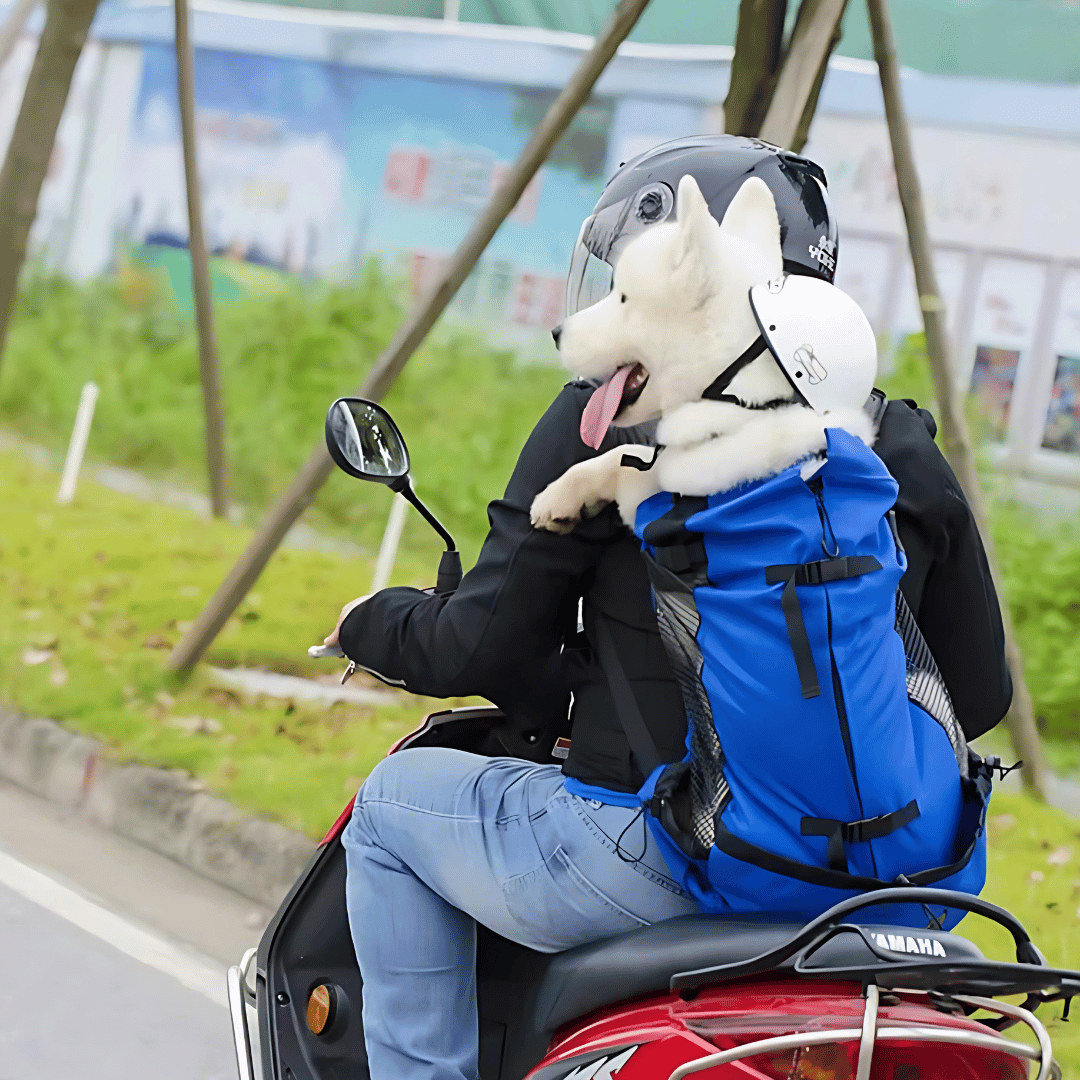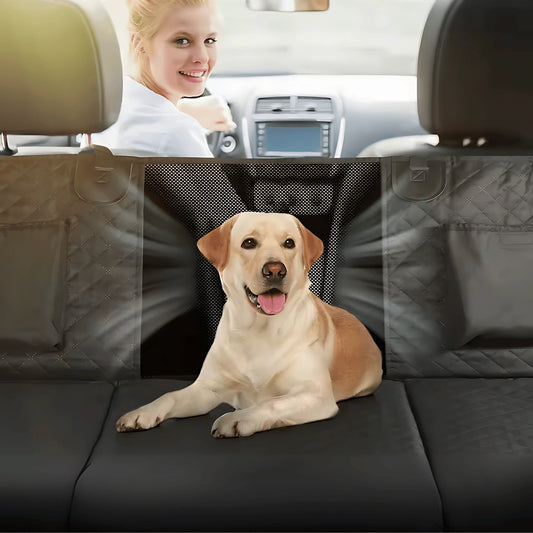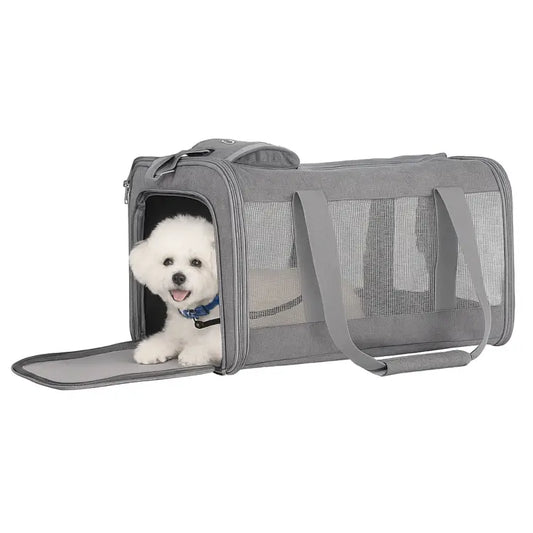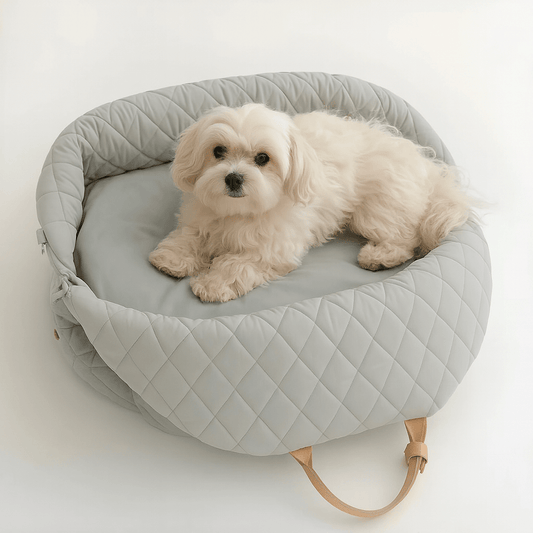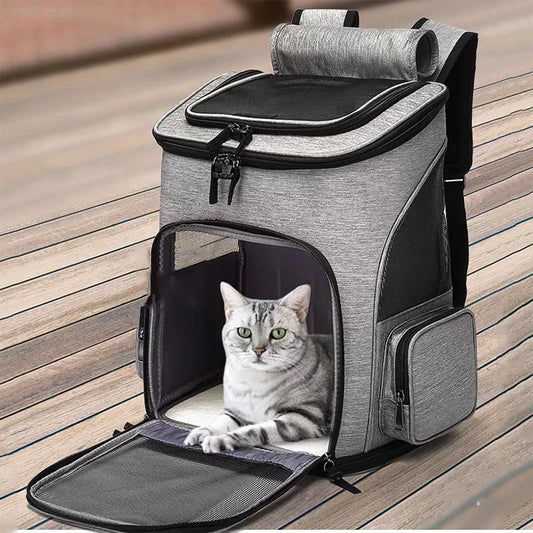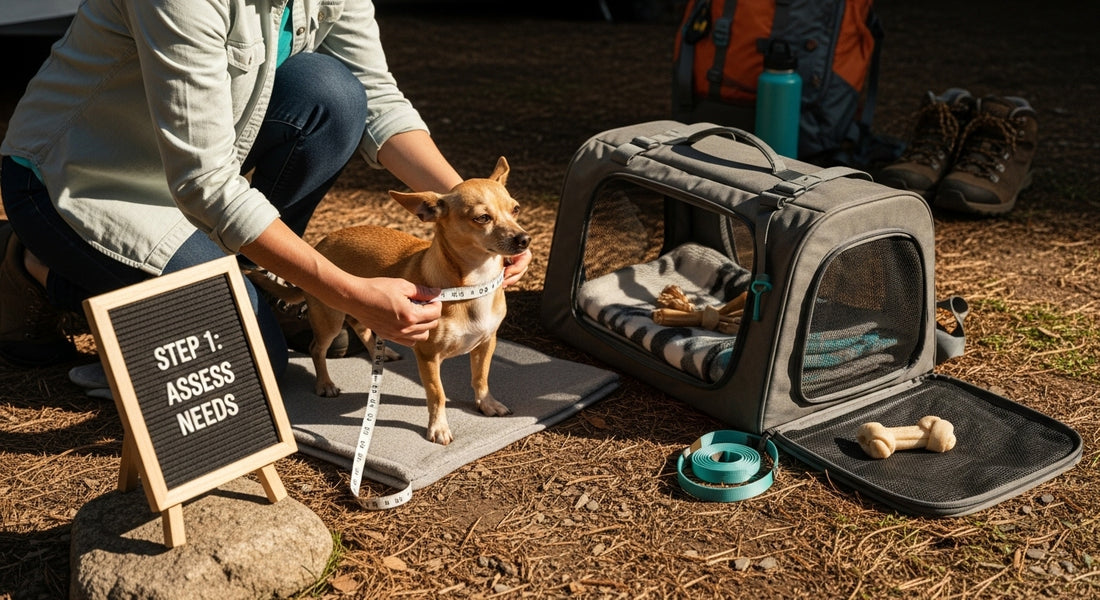
Ultimate Outdoor Dog Carrier Guide for Pet Adventures
Share
Finding the perfect outdoor dog carrier is more complicated than picking one off the shelf. A carrier that’s too small can turn a fun hike into a nightmare for both you and your dog, and over 60 percent of owners choose the wrong size on their first try. Most people think the type of carrier matters most, but comfort actually starts with knowing your dog’s exact measurements and unique needs. This one step can change every future adventure.
Table of Contents
- Step 1: Assess Your Dog’s Size And Needs
- Step 2: Research Carrier Types And Features
- Step 3: Test Comfort And Mobility For Your Dog
- Step 4: Pack Essential Accessories For Outdoor Travel
- Step 5: Verify Safety And Compliance Standards
- Step 6: Create A Training Routine With The Carrier
Quick Summary
| Key Point | Explanation |
|---|---|
| 1. Assess your dog’s size and needs | Measure your dog’s dimensions to ensure a suitable carrier for comfort and safety during travel. |
| 2. Research various carrier types | Understand different carrier options and their features to match specific outdoor activities and your dog’s needs. |
| 3. Test your dog’s comfort with the carrier | Gradually introduce the carrier at home, monitoring your dog’s reactions to ensure they adapt positively. |
| 4. Pack essential travel accessories | Prepare a travel kit that includes hydration, nutrition, and first-aid supplies to enhance comfort and safety. |
| 5. Ensure carrier safety compliance | Verify that the carrier meets structural integrity and transportation regulations to safeguard your dog during trips. |
Step 1: Assess Your Dog’s Size and Needs
Selecting the right outdoor dog carrier begins with a thorough understanding of your dog’s unique physical characteristics and specific travel requirements. Your dog’s size, weight, breed, and individual needs will determine the most suitable carrier for outdoor adventures. This critical first step ensures your pet’s comfort, safety, and enjoyment during any travel experience.
Start by measuring your dog’s dimensions carefully. Use a flexible measuring tape to record their length from neck to tail base, height from floor to shoulder, and full body weight. These measurements are crucial when selecting a carrier that provides adequate space and support. Dogs come in diverse shapes and sizes, so a one size fits all approach rarely works. A Chihuahua will have dramatically different carrier requirements compared to a French Bulldog or a small Terrier.
Consider your dog’s physical condition and temperament as integral parts of carrier selection. Older dogs or those with mobility challenges might require carriers with additional support features like padded interiors or extra ventilation. Active, anxious, or highly energetic dogs need carriers with secure closures and robust construction that can withstand potential movement or escape attempts. Check out our comprehensive guide on dog-friendly travel planning for more detailed insights into matching carrier types with specific dog personalities.
Key factors to evaluate when assessing your dog’s carrier needs include:
- Age and potential health limitations
- Typical energy levels and temperament
- Frequency and type of outdoor activities planned
- Existing medical conditions or physical restrictions
By meticulously analyzing these elements, you’ll be well equipped to choose an outdoor dog carrier that transforms travel from a potential stress point to an exciting shared adventure. The goal is not just transportation but creating a comfortable, secure environment that makes your dog feel safe and connected to you during every journey.
Step 2: Research Carrier Types and Features
Navigating the world of outdoor dog carriers requires a strategic approach to understanding the diverse range of options available. Different carrier types serve unique purposes and are designed for specific outdoor activities, making comprehensive research essential for selecting the perfect travel solution for your furry companion.
Start by exploring the primary carrier categories: backpack carriers, shoulder bags, soft-sided carriers, hard-sided carriers, and specialized hiking or adventure carriers. Each type offers distinct advantages depending on your specific outdoor plans. Backpack carriers, for instance, provide hands-free transportation and are ideal for hiking or urban exploration, while shoulder bags offer more flexibility for shorter trips and city environments. Hard-sided carriers provide maximum protection during more rigorous travel scenarios, and soft-sided options deliver comfort and lightweight portability.
Evaluate critical features that distinguish high-quality outdoor dog carriers. Ventilation, weight distribution, security mechanisms, and durability are paramount considerations. Look for carriers with multiple mesh windows that allow proper airflow, padded straps that reduce strain on your body, robust zippers and closures that prevent unexpected escapes, and materials that can withstand various weather conditions. Learn more about essential pet travel accessories in our comprehensive guide to complement your carrier research.
Key features to prioritize when researching dog carriers include:
- Weight capacity and maximum dog size compatibility
- Interior padding and comfort elements
- External storage compartments
- Weather resistance and durability
- Ease of cleaning and maintenance
Successful carrier selection involves balancing your dog’s specific needs with the intended outdoor activities.
Here is a table comparing the main outdoor dog carrier types and their core features to help you match the right style to your adventure needs.
| Carrier Type | Best For | Key Features | Portability |
|---|---|---|---|
| Backpack Carrier | Hiking, urban exploration | Hands-free, padded straps, multiple mesh windows | High |
| Shoulder Bag | Short trips, city walks | Flexible design, easy access, moderate storage | High |
| Soft-Sided Carrier | Lightweight travel | Comfortable, lightweight, mesh ventilation | Medium to High |
| Hard-Sided Carrier | Rigorous travel, protection | Solid construction, maximum security, sturdy materials | Medium |
| Hiking/Adventure | Mountain/outdoor environments | Specialized support, weather resistance, robust closures | Medium to High |
Step 3: Test Comfort and Mobility for Your Dog
Testing your dog’s comfort and mobility in a new carrier is a critical step that transforms theoretical selection into practical experience. Gradual introduction and patient observation are key to ensuring your dog’s acceptance and comfort with the new travel solution. This step helps prevent potential stress and resistance during future outdoor adventures.
Begin the testing process at home in a calm, familiar environment. Place the carrier in an open space and encourage your dog to explore it naturally. Use positive reinforcement techniques like treats and gentle praise to create a positive association. Allow your dog to enter and exit the carrier voluntarily, helping them understand it is a safe and welcoming space. Short initial sessions of 5-10 minutes will help your dog acclimate without overwhelming them. Pay close attention to their body language, looking for signs of comfort or tension.
Progressively increase carrier exposure by incorporating short mock trips around your home or yard. Learn more about traveling comfortably with dogs of all ages in our comprehensive guide to understand how different dogs might respond to carrier training. Practice walking with the carrier, ensuring your dog feels secure and stable. Check for any signs of discomfort such as whimpering, excessive panting, or attempts to escape. The goal is to make the carrier feel like a natural extension of your shared travel experience.
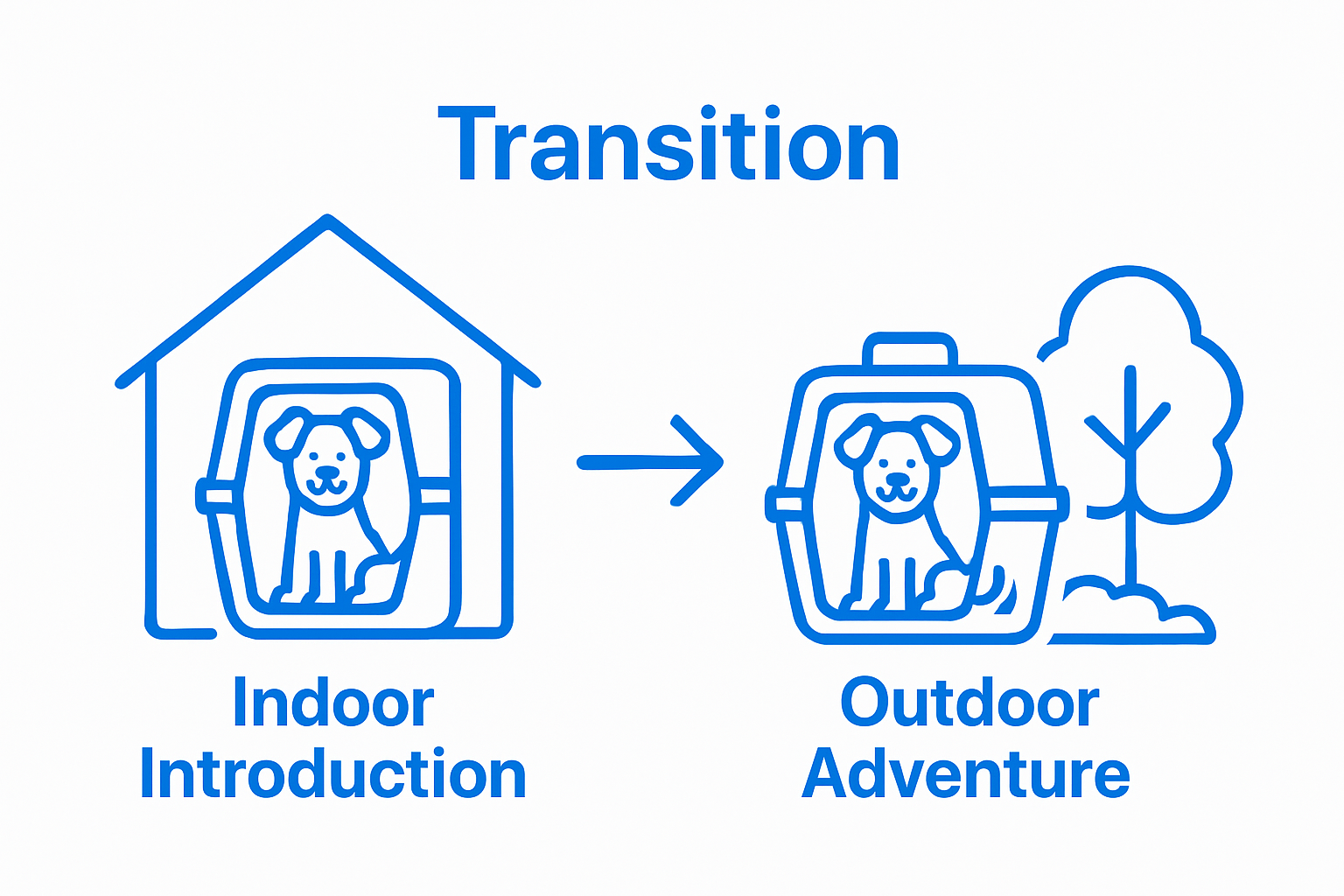
Key indicators of successful carrier adaptation include:
- Willingly entering the carrier without coaxing
- Relaxed body posture during transport
- No signs of distress or anxiety
- Ability to maintain comfortable positioning
Remember that every dog is unique, and adaptation times vary. Some dogs might take days or even weeks to fully comfortable with a new carrier. Patience, consistent positive reinforcement, and attentive observation will help transform the carrier from a potential source of stress to an exciting gateway for shared adventures.
Step 4: Pack Essential Accessories for Outdoor Travel
Preparing the right accessories for your outdoor dog carrier adventure transforms a simple trip into a well-orchestrated, comfortable journey for both you and your furry companion. Strategic packing goes beyond throwing a few items into a bag it requires thoughtful consideration of your dog’s specific needs and the environment you’ll be exploring.
Start by creating a comprehensive travel kit that addresses hydration, nutrition, comfort, and emergency preparedness. Pack a portable water bottle with an attached drinking attachment designed specifically for dogs, ensuring your pet stays hydrated during outdoor activities. Bring lightweight, compact food containers that seal tightly and measure out portioned meals to maintain your dog’s regular feeding schedule. Include collapsible food and water bowls that take minimal space in your carrier, making mealtime convenient regardless of your location.
Discover our complete pet travel packing checklist for comprehensive outdoor preparation to ensure you don’t miss any critical items. Pack a small first aid kit tailored for dogs, including items like bandages, antiseptic wipes, tweezers, and any specific medications your dog might need. Bring a lightweight microfiber towel for quick cleanups, waste bags, and a compact brush for unexpected grooming needs. Consider your specific outdoor environment temperature regulation accessories like cooling bandanas for hot weather or a lightweight dog sweater for cooler climates can make a significant difference in your dog’s comfort.
Essential accessories to include in your outdoor travel pack:
- Portable water bottle with dog-friendly drinking mechanism
- Compact, sealed food containers
- Collapsible food and water bowls
- Dog-specific first aid kit
- Waste bags and cleaning supplies
Remember that careful preparation reflects your commitment to your dog’s comfort and safety. By anticipating potential needs and packing strategically, you transform a simple carrier trip into a seamless, enjoyable adventure that strengthens the bond between you and your four-legged companion.
This table provides an at-a-glance checklist of essential accessories to pack for outdoor travel with your dog carrier, summarizing their purpose for a smoother adventure.
| Accessory | Purpose |
|---|---|
| Portable water bottle | Hydration on the go |
| Compact, sealed food container | Keeps food fresh and portioned |
| Collapsible food and water bowls | Easy feeding and drinking anywhere |
| Dog-specific first aid kit | Emergency care and minor injuries |
| Waste bags and cleaning supplies | Cleanliness and waste management |
| Microfiber towel | Quick drying and clean up |
| Temperature regulation accessory | Comfort in hot or cold weather |
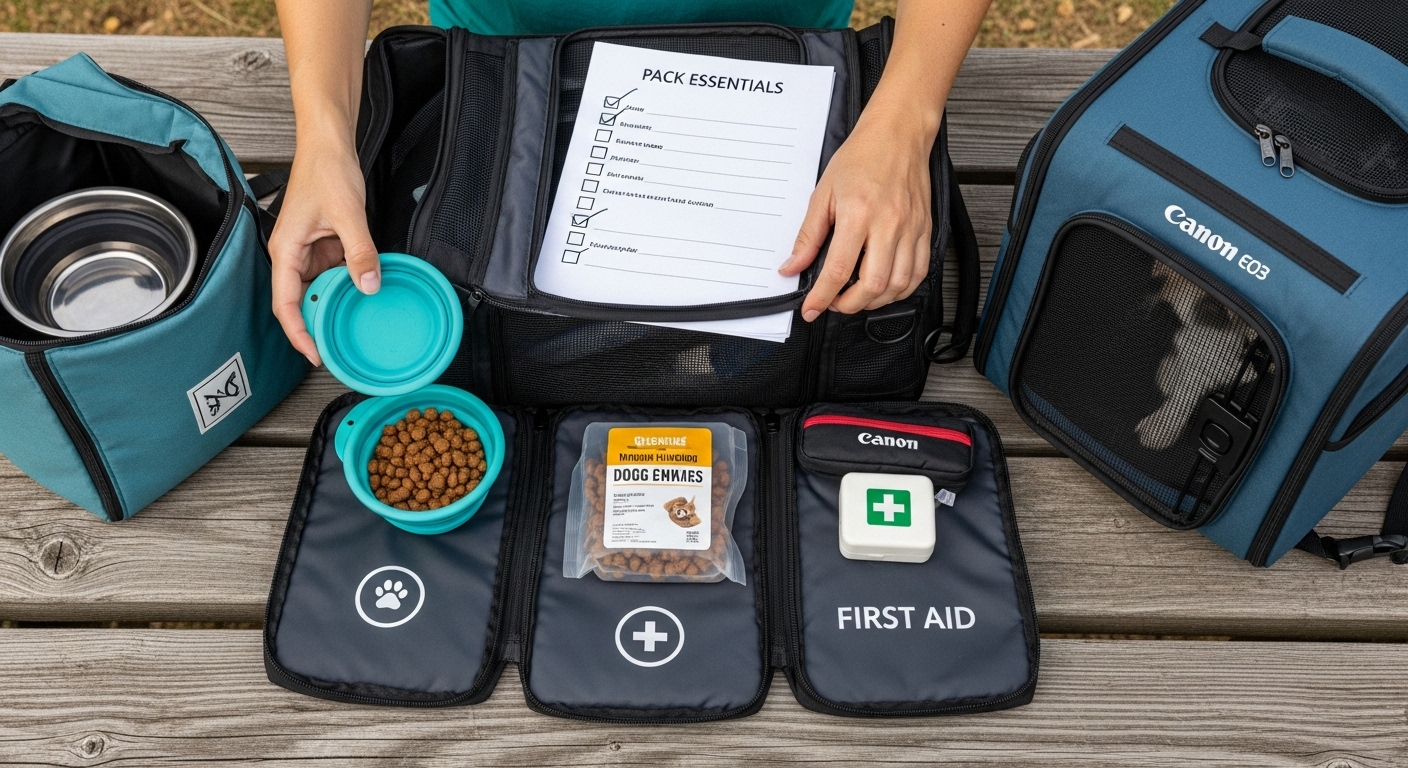
Step 5: Verify Safety and Compliance Standards
Ensuring the safety and compliance of your outdoor dog carrier is a critical step that protects both you and your furry companion during travel. Safety standards are not just recommendations they are essential protocols that prevent potential risks and guarantee a secure transportation experience. This comprehensive verification process involves examining multiple aspects of your carrier’s design, construction, and regulatory compliance.
Begin by thoroughly inspecting the carrier’s structural integrity. Check all attachment points, zippers, straps, and closures for potential weak spots or signs of wear. Ensure that mesh ventilation panels are securely attached and free from tears or potential escape points. Examine the carrier’s material strength, looking for high tensile fabrics that can withstand outdoor conditions and potential dog movement. Pay special attention to weight distribution mechanisms and load-bearing components that directly impact your dog’s comfort and safety during transport.
Explore our comprehensive guide to travel safety standards for pet carriers to understand the nuanced requirements for different travel scenarios. Verify that your carrier meets specific transportation regulations, especially if you plan to use it during air travel, long road trips, or outdoor adventures. Research airline-specific pet carrier requirements, which often include precise dimension restrictions, ventilation standards, and material specifications. For outdoor and hiking scenarios, look for carriers with additional safety features like reflective elements, emergency release mechanisms, and robust waterproofing.
Key safety verification criteria include:
- Structural integrity of all carrier components
- Secure and tear-resistant ventilation panels
- Compliance with transportation authority guidelines
- Weight distribution and load-bearing capacity
- Emergency release and quick-detach mechanisms
Remember that safety verification is an ongoing process. Regularly inspect your carrier before each use, checking for any new wear and tear that might compromise its protective capabilities. Your diligence in maintaining and verifying safety standards demonstrates a commitment to your dog’s well-being and ensures that every outdoor adventure becomes a secure, enjoyable experience.
Step 6: Create a Training Routine with the Carrier
Developing a structured training routine transforms your dog’s relationship with the outdoor carrier from potential anxiety to genuine excitement. Consistency, patience, and positive reinforcement are the cornerstone principles of successful carrier training, enabling your dog to view the carrier as a safe, enjoyable space rather than a restrictive environment.
Begin your training process in a calm, familiar indoor setting where your dog feels most comfortable. Place the carrier in an accessible location and allow your dog to explore it naturally. Encourage interaction by strategically placing high-value treats inside the carrier, creating a positive association. Start with short, five-minute sessions where your dog can enter and exit freely, gradually increasing duration as their comfort level grows. Use a calm, encouraging tone and reward every voluntary interaction with praise and treats, helping your dog understand that the carrier represents positive experiences.
Learn more about positive training techniques for pet travel preparation to enhance your training approach. Progress to simulated movement by gently lifting and moving the carrier while your dog is inside, starting with minimal distance and duration. Practice walking short distances, monitoring your dog’s body language and stress levels. Some dogs adapt quickly, while others require more gradual exposure. Pay attention to signs of comfort such as relaxed breathing, willingness to enter the carrier voluntarily, and calm demeanor during brief transport.
Key elements of an effective carrier training routine include:
- Consistent, short training sessions
- Positive reinforcement with high-value treats
- Gradual exposure to carrier movement
- Calm, patient approach to training
- Monitoring dog’s comfort and stress levels
Remember that every dog learns differently. Some may require weeks of patient training, while others adapt rapidly. The goal is not speed but creating a lasting, positive association with the carrier that transforms it from a potential source of stress to an exciting gateway for shared adventures.
Ready to Upgrade Your Outdoor Adventures With a Smarter Dog Carrier?
Your dog’s comfort, safety, and happiness are too important to trust to a generic carrier. This guide has shown how much choice depends on understanding your dog’s unique needs, matching the right features to your activities, and ensuring real-world mobility and comfort. Carrying your dog on the trail or while traveling brings its own set of challenges, like finding a design that is both secure and welcoming or one that stands up to rugged adventures without sacrificing style.
Explore the Dog Hiking Backpacks & Outdoor Carriers | Built for Adventure collection by YappyBoo, designed for active pets and travel-loving owners. Our outdoor carriers are built with durable materials, smart ventilation, and thoughtful details that solve the very pain points described in this guide. They help prevent stress—so you and your pup can focus on the fun, not on worries about safety or fit.
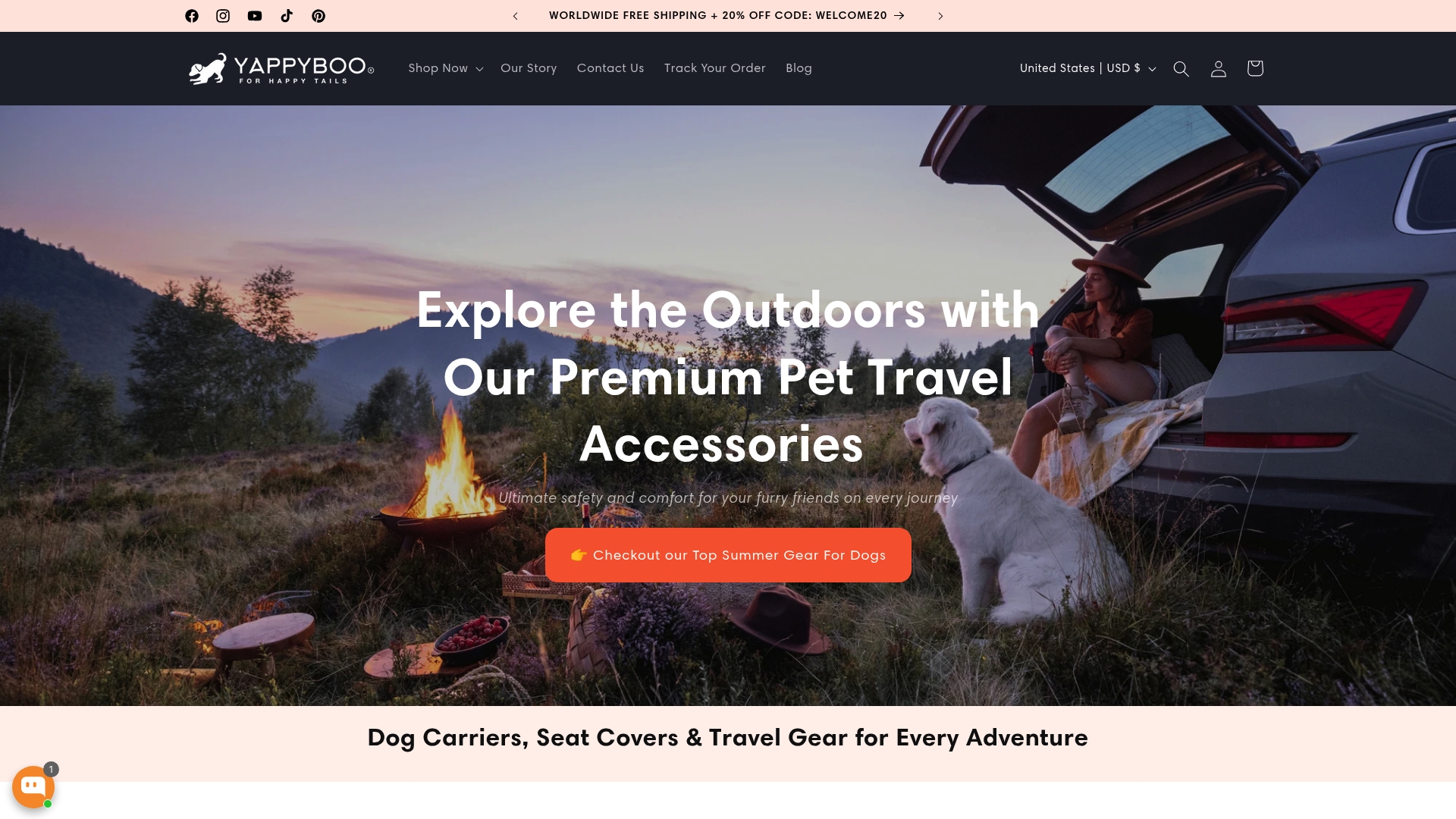
Transform the way you travel with your dog. Visit YappyBoo now to find the carrier that meets your adventure goals and your dog’s unique needs. For the ultimate comfort, discover our Travel Dog Beds and take every journey to the next level. Your next adventure is waiting and the best solutions are just a click away.
Frequently Asked Questions
How do I choose the right outdoor dog carrier for my pet?
Selecting the right outdoor dog carrier involves assessing your dog’s size, weight, breed, and specific travel needs. Measure your dog’s length, height, and weight, and consider their age, energy levels, and health requirements to find a carrier that ensures comfort and safety.
What are the different types of outdoor dog carriers available?
There are several types of outdoor dog carriers, including backpack carriers, shoulder bags, soft-sided carriers, hard-sided carriers, and specialized hiking carriers. Each type serves different purposes, so choose one based on your planned outdoor activities and your dog’s characteristics.
How can I assess my dog’s comfort in a new carrier?
To assess your dog’s comfort, gradually introduce them to the carrier in a calm environment. Use positive reinforcement to encourage exploration, observe their body language for signs of stress, and increase exposure through short mock trips to ensure they feel secure and relaxed.
What essential accessories should I pack for outdoor dog travel?
When packing for outdoor dog travel, include a portable water bottle with a dog-friendly attachment, collapsible food and water bowls, a compact first aid kit, waste bags, and any temperature regulation items like cooling bandanas or lightweight sweaters to ensure your dog’s comfort and safety.
Recommended
- Best Dog Carriers for Travel: How to Choose Right – Yappyboo
- Best Dog Travel Carriers for Small Dogs 2025: Expert Guide – Yappyboo
- Hiking with Dogs: Safety Tips & Gear Guide – Yappyboo
- Fly Stress-Free with Top Airline-Approved Pet Carriers – Yappyboo
- Essential Dog Travel Gear Process for Hassle-Free Trips
